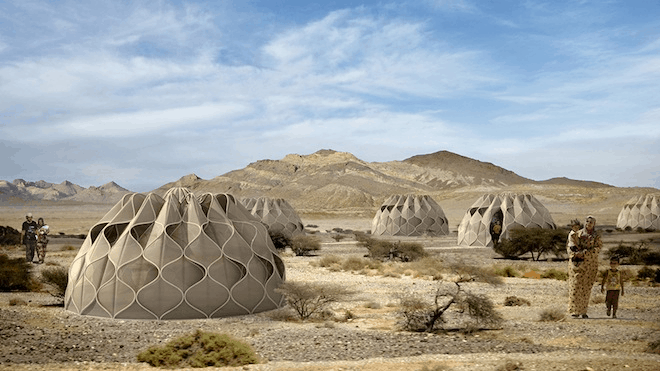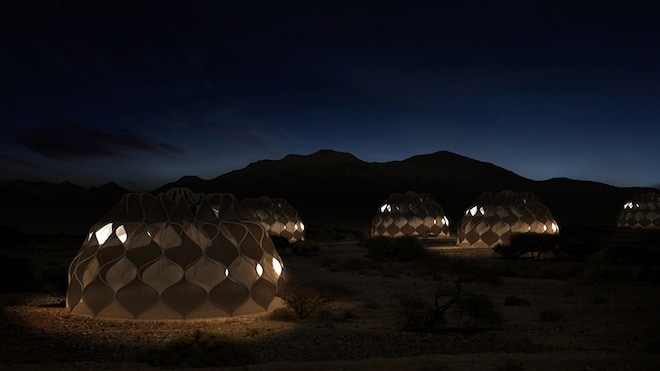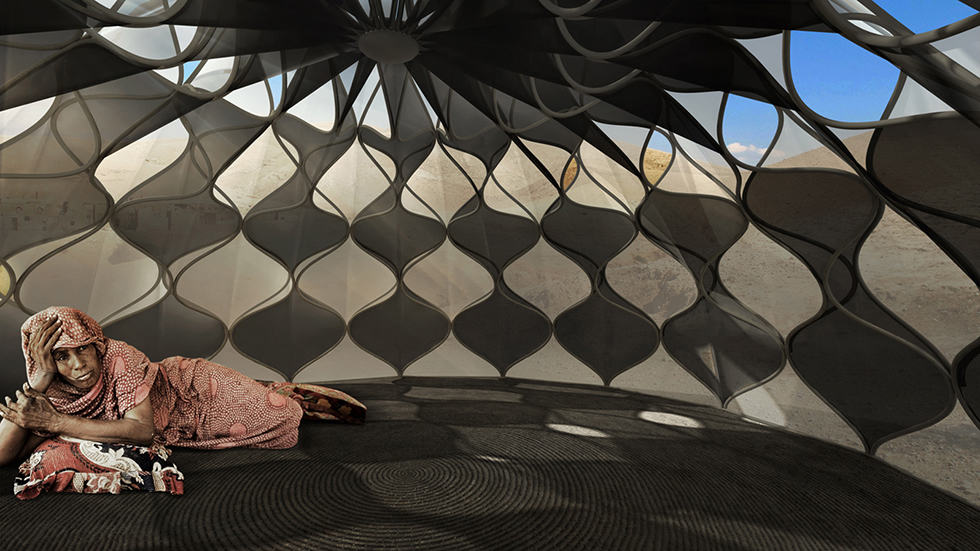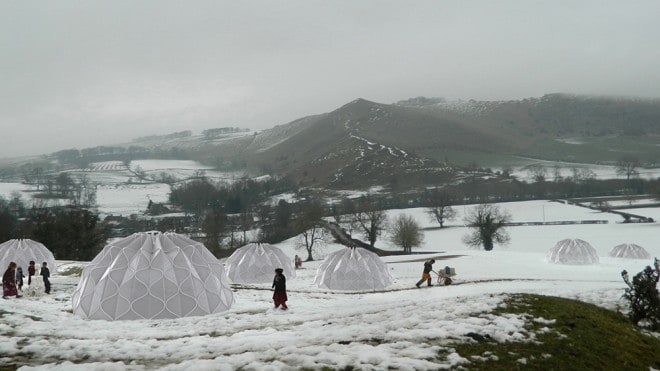Displaced from their homes and left to find shelter in strange lands, there are now more than 40 million people worldwide that seek solace and basic security. Perhaps some find a tarp or tent to hide out in, but such temporary abode is obviously less than optimal, and only makes a dismal situation seem worse.
To bridge the gap in need, Jordanian-Canadian architect and designer Abeer Seikaly designed a new kind of shelter, and it’s one that allows refugees to rebuild their lives with dignity.

The architect that now lives in Amman, Jordan is well poised to design a dwelling for refugees, given that her ancestors in Jordan probably shuffled between nomadic and sheltered life in the desert for centuries.
Abeer wrote on her design brief, “The movement of people across the earth led to the discovery of new territories as well as the creation of new communities among strangers forming towns, cities, and nations. Navigating this duality between exploration and settlement, movement, and stillness is a fundamental essence of what it means to be human.”
While this is true, forced migration is increasing due to war and climate change. Many are forced out of their homes with very little money and no semblance of where to go. As security and shelter are basic needs of any being, no doubt this period in a refugee’s life is a traumatic one.

But aid can be offered, and it is with the new collapsible woven shelters that are conceptual, but proven to work.
Comprised of a structural woven fabric that “blurs the distinction between structure and fabric,” the shelter expands to create a private enclosure and contracts for mobility.” Now, those who have to move can carry a respectable home with them. The shelter also comes with some fundamental amenities required by modern people, including water and renewable electricity.

The outer solar-powered skin absorbs energy from the sun that is converted into usable electricity, while the inner skin provides pockets for storage – particularly at the lower half of the shelters.
That’s not all, a water storage tank at the top of the tent allows people to take quick showers. Water rises to the storage tank via a thermosiphoning system, and a drainage system ensures that the tent is not flooded.

The ingenious design is well ventilated and lit, and opens up in the summer while also huddling down during cold winters. What’s most important, though, is that the collapsible shelter allows refugees to have some sense of security, some semblance of home.
“This lightweight, mobile, structural fabric could potentially close the gap between need and desire as people metaphorically weave their lives back together, physically weaving their built environment into a place both new and familiar, transient and rooted, private and connected,” says Seikaly.

“In this space, the refugees find a place to pause from their turbulent worlds, a place to weave the tapestry of their new lives. They weave their shelter into home.”
Sources:
This article (Beautiful Woven Refugee Tents Get Their Power from the Sun) is free and open source. You have permission to republish this article under a Creative Commons license with attribution to the author and TrueActivist.com.


